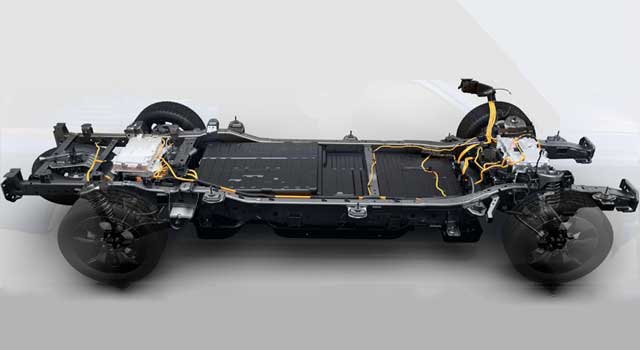Understanding the Ford Hybrid and EV Warranty
Investing in a Ford hybrid or electric vehicle comes with the added benefit of comprehensive warranty coverage. The Ford extended warranty for hybrid and electric vehicles ensures that you have peace of mind and protection for the high-voltage battery and eDrive systems.
When it comes to hybrid and electric vehicles, the battery pack is a critical component, and its durability and performance are essential for the overall driving experience. Ford recognizes this and offers a dedicated warranty to cover the high-voltage battery and eDrive systems of their hybrid and EV models. This warranty, known as the Electric Vehicle Component coverage, ensures that you have protection for the heart of your electrified vehicle.
Components Covered by the Warranty
The Electric Vehicle Component warranty includes various high-voltage battery and eDrive components, ensuring comprehensive protection for your vehicle's electrified systems. The covered components encompass the following:
- High Voltage Battery Assembly: This is the core component that powers your hybrid or electric vehicle.
- Bussed Electrical Center (BEC): The BEC manages the distribution of electrical power within the vehicle.
- Battery Energy Control Module (BECM): The BECM regulates the flow of energy to and from the battery.
- On-Board Charger: This component charges the high-voltage battery when connected to a power source.
- Inverter System Controller (ISC): The ISC converts direct current (DC) from the battery into alternating current (AC) to power the vehicle's electric motor.
- DC/DC Converter: The DC/DC converter ensures that the low-voltage systems receive the necessary power from the high-voltage battery.
- eDrive: This encompasses the electric motor and associated systems that drive the vehicle.
With such comprehensive coverage, you can rest assured that Ford has considered all major components necessary for the operation of your hybrid or electric vehicle.
Warranty Coverage Duration and Mileage Limit
The Ford Electric Vehicle Component coverage lasts for an impressive duration of eight years or 100,000 miles, whichever comes first. This extended coverage exceeds the typical warranty period for many other vehicle components and provides you with long-term peace of mind. Whether you plan to keep your Ford hybrid or EV for several years or accumulate significant mileage, Ford has you covered.
In addition to the Electric Vehicle Component warranty, Ford provides a specific warranty for the high-voltage lithium-ion battery capacity. This warranty addresses the natural degradation that occurs over time and usage of the battery. While it is normal for a battery's capacity to decrease gradually, Ford ensures that excessive capacity loss is covered.
According to Ford's warranty, if an authorized EV Certified Ford Dealer determines that the battery capacity is less than 70% of its original capacity, or less than 65% for vehicles in cutaway or chassis cab configuration, it is considered excessive capacity loss. In such cases, Ford will cover the necessary repairs or replacement to correct this excessive capacity loss during the warranty period.
It's important to note that the measurement method used to determine battery capacity and the decision to repair, replace, or provide reconditioned parts are at Ford's sole discretion. This ensures that you receive the appropriate resolution based on your vehicle's specific needs.
Factors Affecting Electric Vehicle Battery Life:
While Ford's warranty provides coverage for the high-voltage battery, it's essential to understand the factors that can influence the battery's life and capacity. By taking proactive measures, you can optimize the battery's performance and maximize its lifespan.
- Environmental Conditions
Environmental conditions play a significant role in the longevity of an electric vehicle battery. Extreme temperatures, whether excessively hot or cold, can impact the battery's performance and accelerate degradation. High temperatures can cause chemical reactions that degrade the battery, while extremely cold temperatures can decrease the battery's efficiency. To mitigate the effects of extreme temperatures, Ford recommends parking your vehicle in covered or shaded areas whenever possible. Additionally, utilizing the vehicle's climate control features while charging can help regulate the battery's temperature and optimize its performance. - Charging Habits
Proper charging habits can significantly impact the lifespan and capacity of an electric vehicle battery. Ford advises owners to follow their recommendations for charging and usage to maximize the battery's longevity. While Level 3 charging, also known as DC fast charging, offers rapid charging for road trips, it's best to primarily charge your vehicle at home using Level 1 or Level 2 chargers. Regularly utilizing Level 3 charging may lead to increased heat generation, which can accelerate battery degradation. By primarily using Level 1 or Level 2 chargers, you can ensure a slower and more controlled charging process, promoting the battery's health. Furthermore, maintaining a charge level between 20% and 90% during daily use is recommended. Allowing the battery to regularly reach a low state of charge or charging it to 100% capacity on a regular basis can put unnecessary strain on the battery and impact its long-term performance. - Software Updates
Keeping your vehicle's software up to date is crucial for optimal battery performance and overall vehicle functionality. Ford provides regular software updates to enhance the battery's efficiency and address any potential issues. It is your responsibility to ensure that all available software updates are installed within 30 days of their availability. By doing so, you can take advantage of the latest optimizations and ensure that your vehicle operates at its best.


